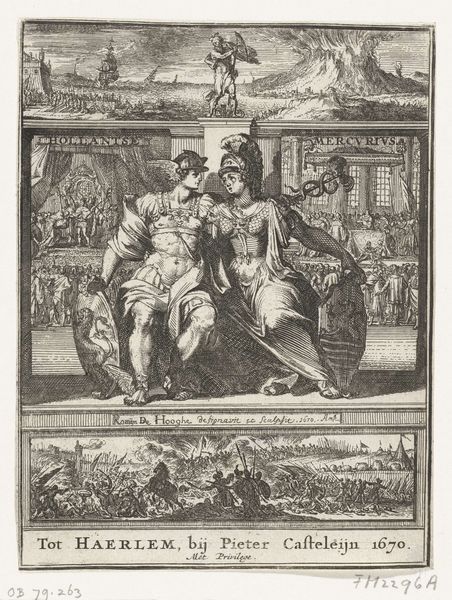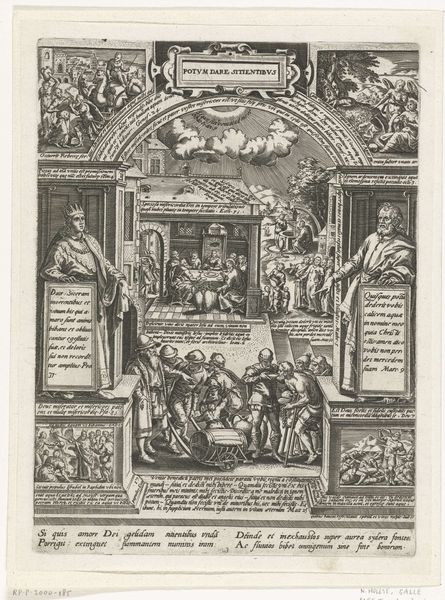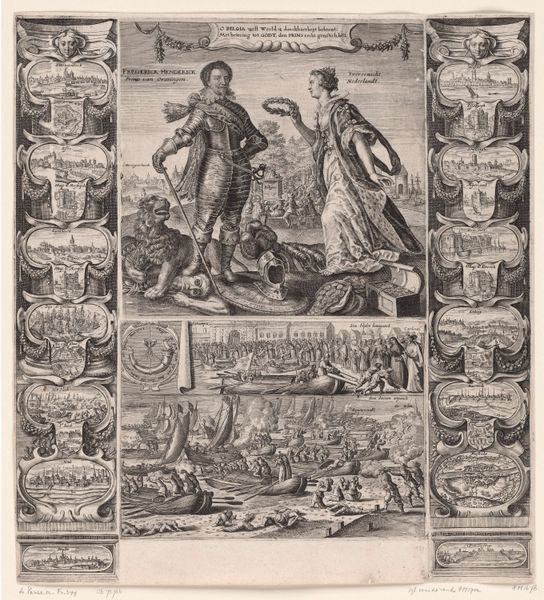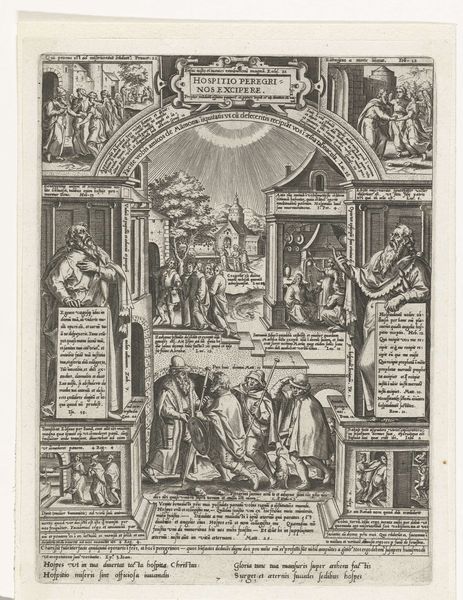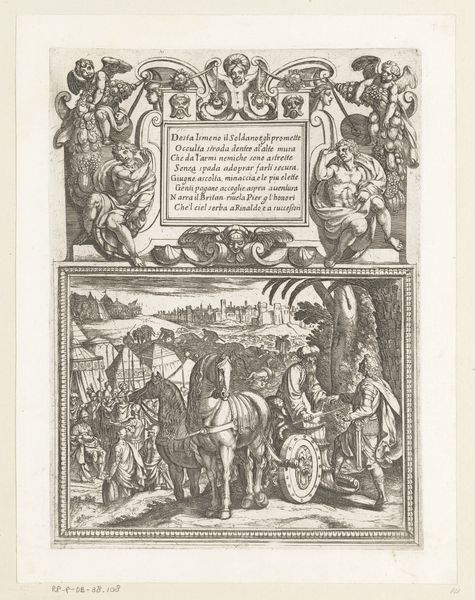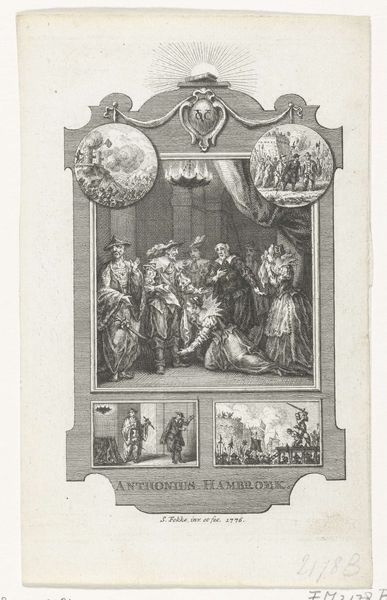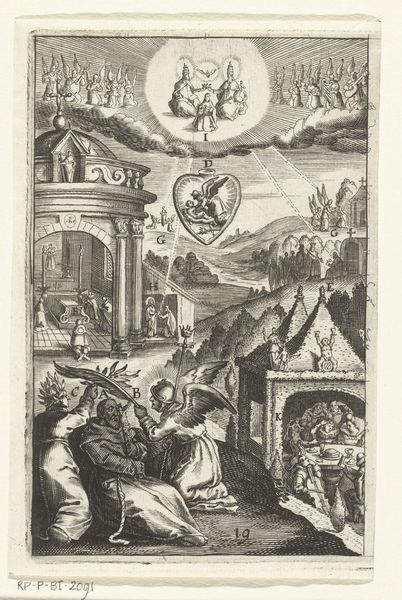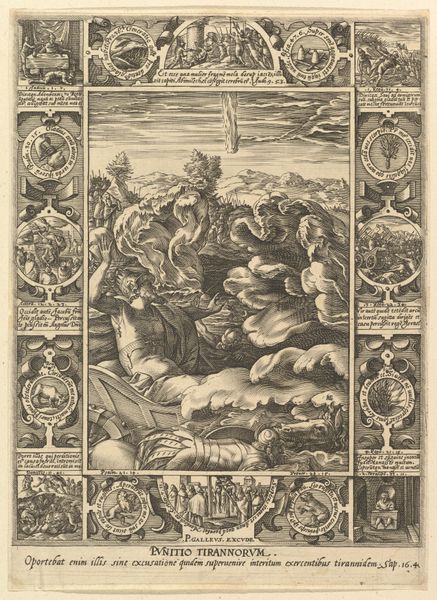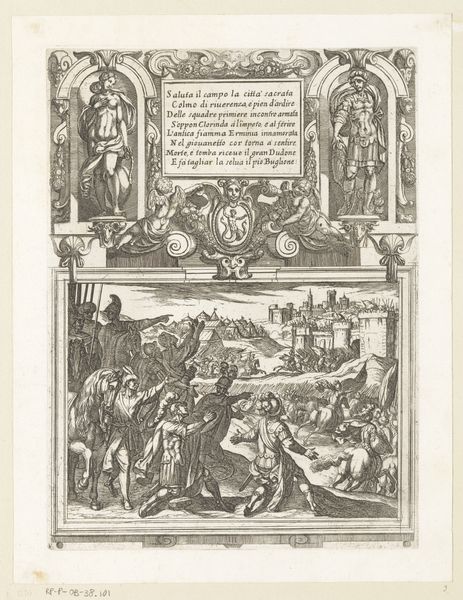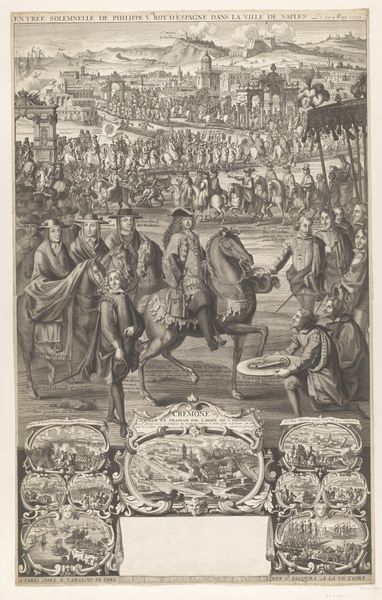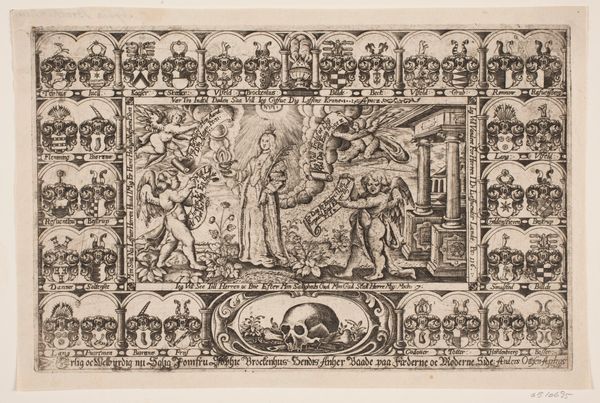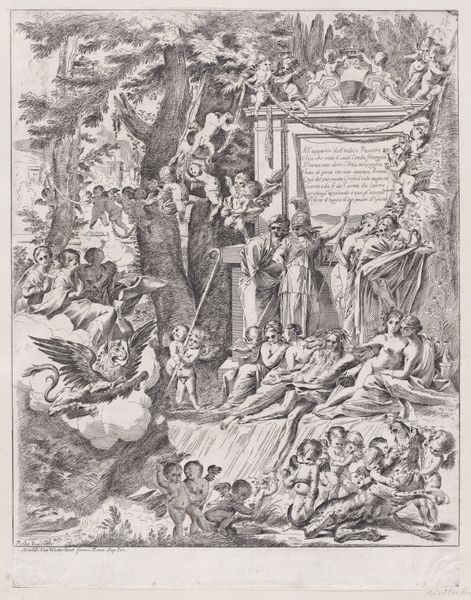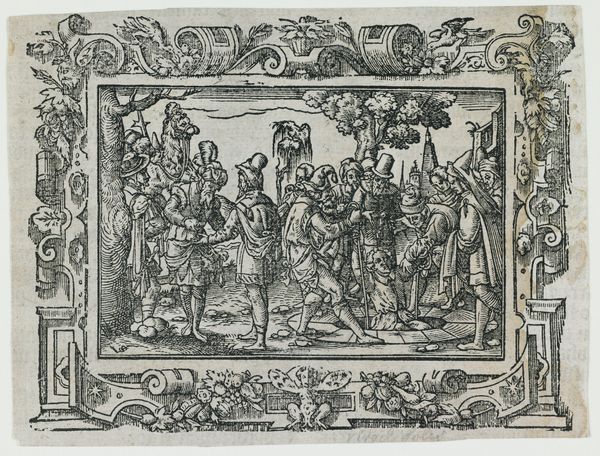
Kristus bespiser de 5000. Omgivet af Jørgen Vinds aneskjolde 1644
0:00
0:00
drawing, print, paper, ink, pen, engraving
#
drawing
#
ink drawing
#
allegory
#
narrative-art
#
pen drawing
# print
#
pencil sketch
#
mannerism
#
paper
#
vanitas
#
ink
#
pen
#
history-painting
#
engraving
#
miniature
Dimensions: 302 mm (height) x 241 mm (width) (bladmaal)
Curator: This fascinating print, rendered in pen and ink, comes to us from Hans Andreas Greys, circa 1644. It depicts Christ feeding the 5000, a powerful biblical scene nested within a meticulously detailed frame. Editor: My initial reaction is… dense. Overwhelming, almost. The central scene, while significant, feels somewhat hemmed in by all the surrounding heraldry. There’s a lot going on materially. It makes you wonder who commissioned it, why, and how the labour was divided up. Curator: You've hit upon something essential there. It's titled "Christ Feeding the 5000, Surrounded by Jørgen Vind's Ancestral Shields." So, yes, it’s very much a commissioned piece. Editor: The family crests. All that intricate linework and pattern making—it would have been a real demonstration of skill to create. I imagine Greys used a combination of etching and engraving, which is laborious work. What were the different types of paper stock available? Who was buying paper? Who was literate? I want to understand the cultural context that let to the print's fabrication, its labor… the system through which images are materialised in the early modern period! Curator: Well, seeing it more symbolically, for a moment, the shields representing Jørgen Vind’s lineage become like witnesses to the miracle. Each crest a silent observer, underscoring the historical weight of faith and the power of family legacy. Perhaps he hoped to claim a share in that miracle through association? Editor: I suppose. I find it visually distracting. I see it through the lenses of production. I’m thinking about the access, or lack of access, to skills that enabled production, or lack thereof… this is more than religious history, for me, it’s social history. The miniature scale coupled with intense detail... it really shows off the engraver’s abilities, while cementing the status of Vind's family. And that skull down at the bottom… rather blatant vanitas symbolism. Curator: Quite! A constant reminder of mortality even amidst abundance. Though perhaps that's meant to make the divine act of feeding the masses all the more poignant. Like a gentle prodding. "Remember, this miracle is a respite from the inevitable.” It brings us closer to understanding the ephemeral quality of existence... I can understand wanting to root such meaning in the solid nature of ink on paper, a kind of proof against uncertainty. Editor: That’s beautifully put. Ultimately, examining this piece through the lens of material history forces us to recognise the socio-economic forces that led to the prints creation in the first place and that continues to influence art today. Curator: I think on it now I also value the detail—as though each tiny line adds a small prayer to the overall image, a kind of quiet hum of devotion made physical through the laborious process of its making.
Comments
No comments
Be the first to comment and join the conversation on the ultimate creative platform.
